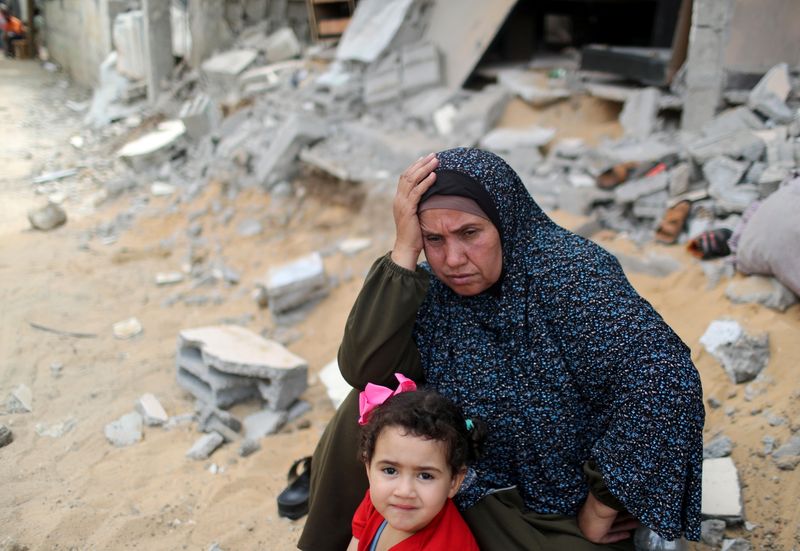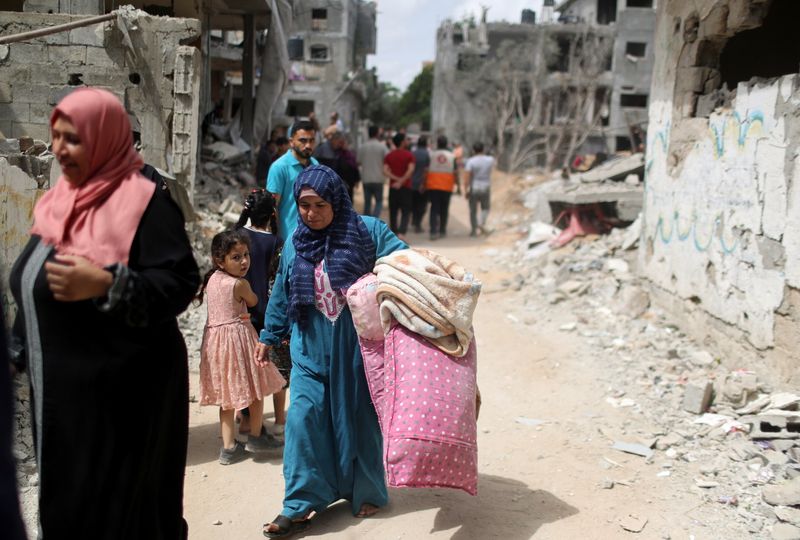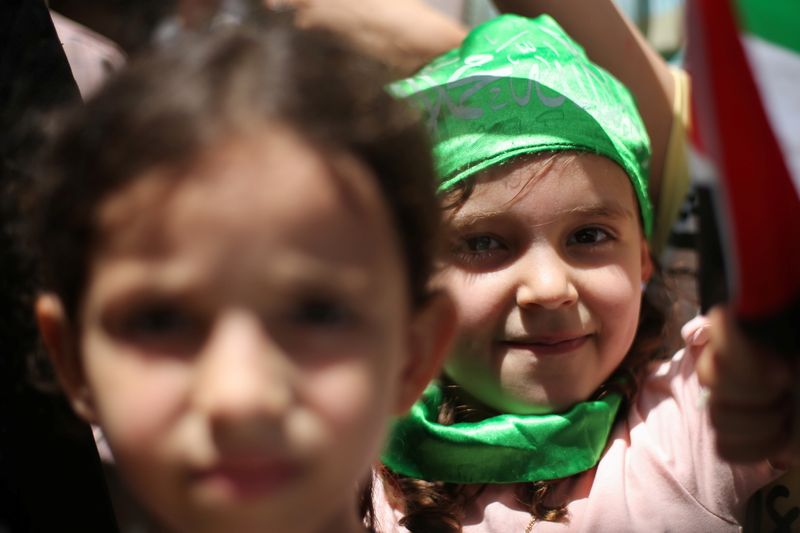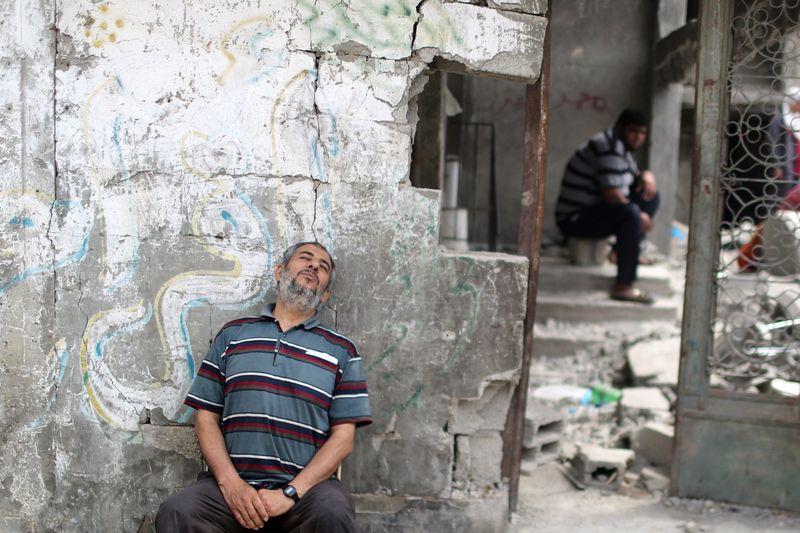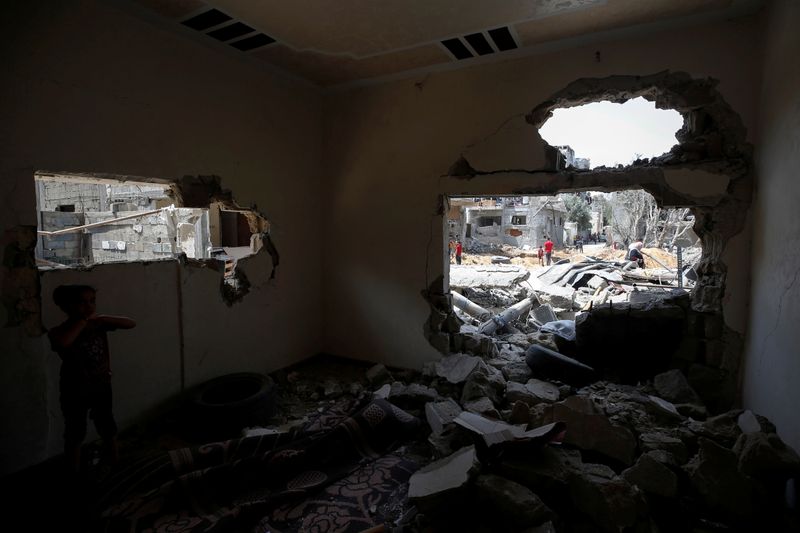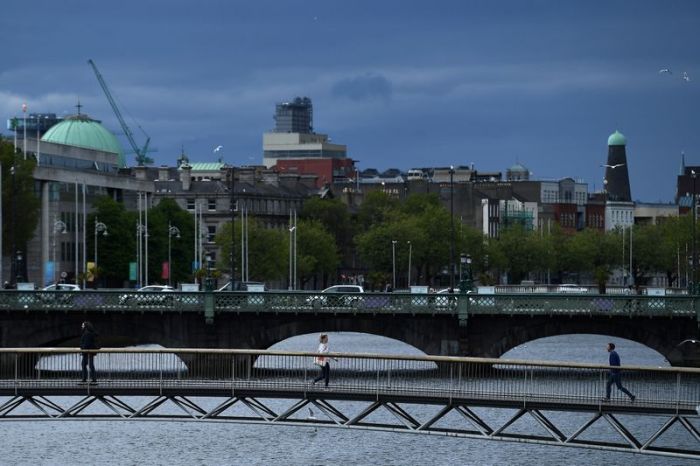GAZA (Reuters) – After huddling at home during Israel’s 11-day bombardment of Gaza, the shock of seeing houses and other buildings destroyed after yet another conflict tempered Palestinian joy that this round of fighting was over.
“It’s like a tsunami,” said Abu Ali, standing next to a heap of rubble that had been a 14-storey tower in Gaza City.
“How can the world call itself civilised? This is a war crime. We are ruled by laws of the jungle,” he said on Friday, hours after a truce was declared.
Commercial buildings, residential towers and private houses across the Palestinian enclave that is home to 2 million people were damaged or destroyed by the time Israel and Gaza’s Islamist rulers Hamas announced Friday’s ceasefire.
Israel says air strikes hit legitimate military targets and says it did everything it could to avoid civilian casualties, including giving prior warnings when it was about to strike residential buildings that it said also had a military use.
Gaza’s housing ministry said on Thursday, shortly before hostilities stopped, that 16,800 housing units were damaged, with 1,800 of those unfit for living and 1,000 destroyed.
Palestinian medics said 243 people were killed in Gaza in air strikes that pounded the enclave day and night since May 10.
Israel said 13 people were killed by barrages of rockets that slammed into homes, synagogues and other buildings.
“We returned to our homes to find destruction,” said Samira Abdallah Naseer, whose two-storey house was hit by a blast. “No place to sit, no water, no electricity, no mattresses, nothing.”
Gaza now faces the task of rebuilding, after the fourth conflict with Israel since Hamas took control of the enclave in 2007, setting up a rival power centre to the Palestinian Authority in the Israeli-occupied West Bank.
‘WHO IS GOING TO PAY?’
“Now we are back to the dilemma of Gaza reconstruction. Who will carry it out, Hamas or the Palestinian Authority? And who is going to pay?,” said Emad Jawdat, a 53-year-old businessman.
“Some people have still not been compensated for their losses in 2014,” he said, referring to last war with Israel that lasted 50 days.
Gaza’s challenge is compounded by an Israeli-led blockade, also supported by Egypt which shares a short border with the enclave. Israel says it imposes a blockade to prevent weapons reaching militants. Palestinians call it collective punishment.
Palestinians have already received some pledges of financial help for reconstruction. Egypt, which mediated the truce, said it would allocate $500 million for rebuilding.
U.S. President Joe Biden said his government — which like the European Union and Israel calls Hamas a terrorist group – would work with the United Nations and others to marshall aid.
Hamas says it is struggling for Palestinian rights against Israeli oppression.
Gaza officials said this war caused damage worth $40 million to industry, $22 million to the power sector and $27 million to agricultural facilities.
In the northern Gaza Strip, thousands of Palestinians who lived close to the border and who had fled to U.N. schools further south for shelter made their way home – piling belongings into cars and onto donkey carts and tractors.
Trudging home along streets littered with potholes and past heaps of broken masonry from damaged buildings, some voiced relief they had survived – and even a sense of victory after a conflict with one of the Middle East’s most powerful armies in which militant rockets hit Tel Aviv and other Israeli cities.
Salwa Al-Batrwai and her family were returning home “as victors”, the 60-year-old said.
“I will kiss the ground, because I made it out (alive), with my children. I can’t describe the feeling,” she said.
(Reporting by Nidal al-Mughrabi; Writing by Rami Ayyub; Editing by Edmund Blair)

